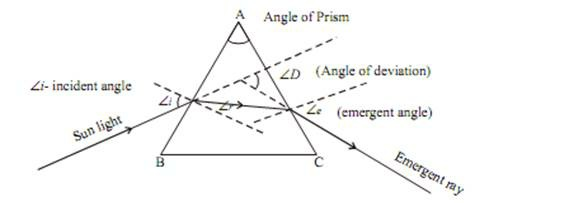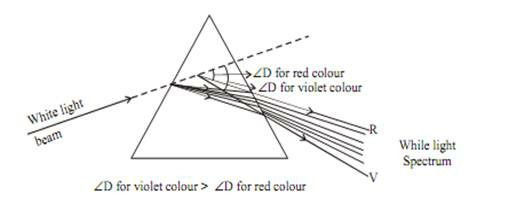
Prism
- It has two triangular bases and three rectangular lateral surfaces.
- These surfaces are inclined to each other. The angle between its two lateral faces is called Angle of Prism.

Angle of Deviation (D)
The angle between the incident ray and emergent ray. Dispersion of white light by a Glass Prism

Inclined refracting surfaces of glass prism show exciting phenomenon.
Splitting of White Light into Band of Colours
- The band of the coloured components of the light beam is called Spectrum i.e. VIBGYOR
- The splitting of light into its component colours is called Dispersion.
- The different component colour of light bends at a different angle with respect to incident angle, the red light bends the least while the violet bends most.
ISSAC NEWTON Experiment
- He was the first, who obtained a spectrum of sunlight by using glass prism. He tried to split the spectrum of white light more by using another similar prism, but he could not get any more colours.
- He repeated the experiment using the second prism in an inverted position with respect to the first prism. Allowed all the colours of the spectrum to pass through the second prism. He found white light emerges on the other side of the second prism.

He concluded that the sun is made up of seven visible colour ‘VIBGYOR’.

